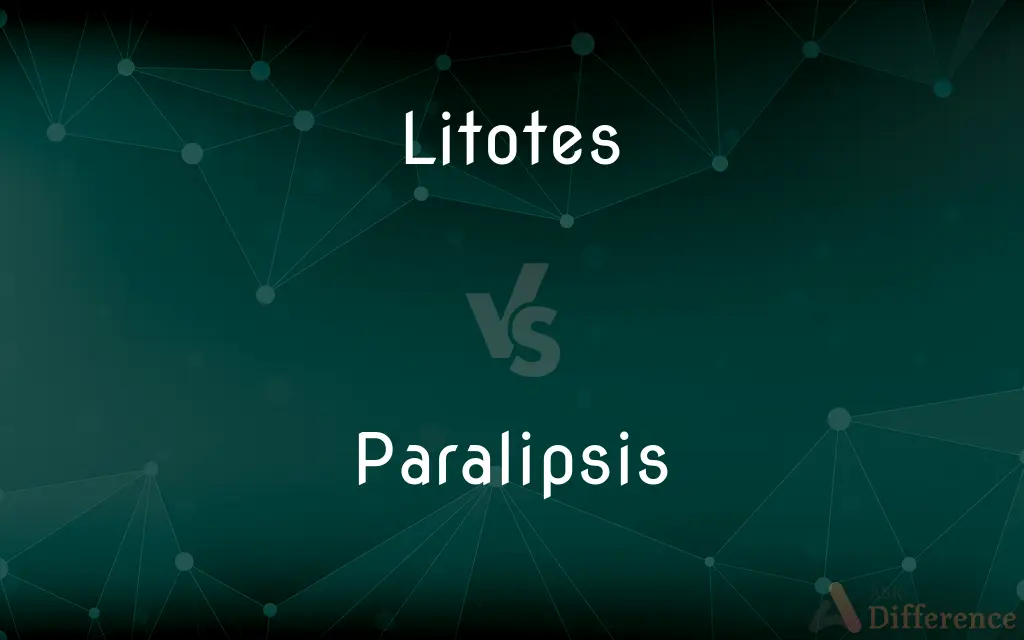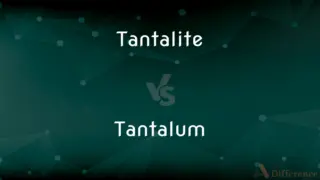Litotes vs. Paralipsis — What's the Difference?

Difference Between Litotes and Paralipsis
ADVERTISEMENT
Compare with Definitions
Litotes
In rhetoric, litotes (, US: or ; also known classically as antenantiosis or moderatour) is a figure of speech and form of verbal irony in which understatement is used to emphasize a point by stating a negative to further affirm a positive, often incorporating double negatives for effect. Litotes is a form of understatement, more specifically meiosis, and is always deliberate with the intention of emphasis.
Paralipsis
See apophasis.
Litotes
A figure of speech consisting of an understatement in which an affirmative is expressed by negating its opposite, as in This is no small problem.
Paralipsis
A figure of speech in which one pretends to ignore or omit something by actually mentioning it.
Litotes
(rhetoric) An ironic figure of speech whereby something is stated by denying its opposite, particularly the negation of a negative quality to say something positive.
ADVERTISEMENT
Paralipsis
See Paraleipsis.
Litotes
A diminution or softening of statement for the sake of avoiding censure or increasing the effect by contrast with the moderation shown in the form of expression; a form of understatement; as, " a citizen of no mean city," that is, of an illustrious city; or, "not bad", meaning "good".
Paralipsis
Suggesting by deliberately concise treatment that much of significance is omitted
Litotes
Understatement for rhetorical effect (especially when expressing an affirmative by negating its contrary);
Saying `I was not a little upset' when you mean `I was very upset' is an example of litotes
Share Your Discovery

Previous Comparison
Tantalite vs. Tantalum
Next Comparison
Preference vs. Discount














































